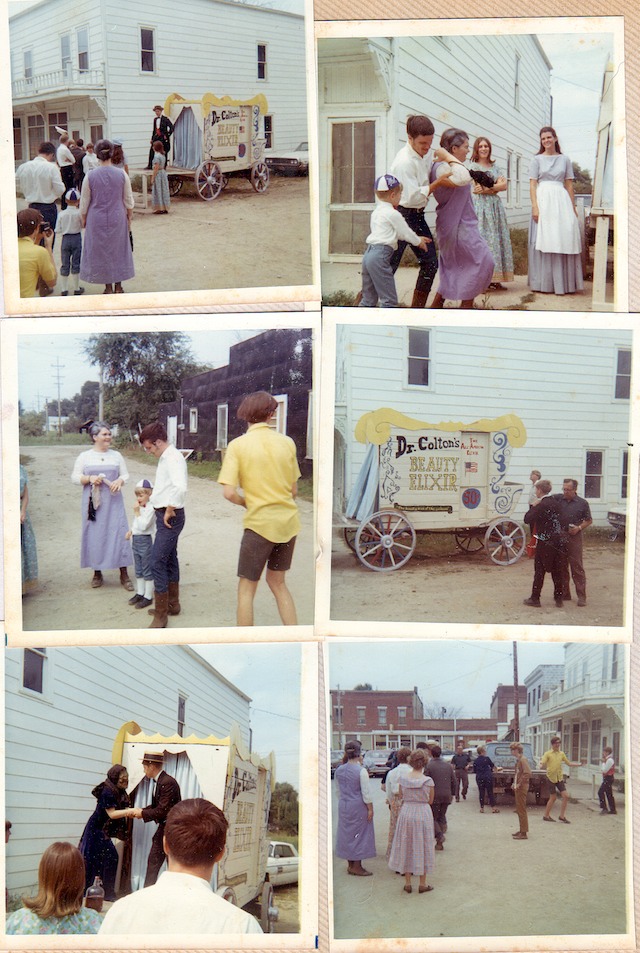The relative success of the stage show prompted my father to suggest that I film the production, and he offered to pay the production costs. I think he meant for me to just film the stage, but of course I had to make it into a “film version of the stage production,” a process that was lengthier and more confusing to my dad. I think, ultimately, that the budget for the film ran about $400.
Now that I had this second chance, I could correct some of the deficiencies of the stage script and add some new material. The character of Georgia, who first appeared in Act Two of the stage production, now had a major scene up front, as well as being seen in the opening sequence with Dr. Colton. Mary Boelter, who did so well in the crowd scenes of the stage production, was cast as Emily’s Aunt Martha—so she appears in a double role in the film. The subplot starring the Deputy as the Masked Marvel (played by Peter Moore) with his cohorts Sidney and Irving (shades of Mad magazine) was a more controversial addition, but allowed me to add a new song, “Reliable Men,” as well as some humor into a very earnest plot.
My main restriction was that I was only able to have David Martin—the lead character—for four days (at least not successive days!), due to his work schedule. Everything revolved around this restriction, and some scenes had to be shot at night so that they could be completed. Fortunately, most everybody from the original cast agreed to be in the film. I wish I could speak with them today to find out how the experience was for them. They were so game to try anything and to act as hammy as they could. I really appreciate all the work and effort they put into it. I’m particularly pleased that my brother, Bob, appeared in the film (in several roles!), as well as Bob Crabb, my original Fatman.
Looking at it today, there’s a lot in Magic in a Bottle that makes me cringe. And I remind myself that I hadn’t really had any training in filmmaking at this point of my life. It was mostly just point and shoot. I was lucky if I could make a fade-in or out by mechanical means, so most transitions were just jump cuts. Like The Golden Years and The Adjusted, the soundtrack was recorded later and done wild, so the showings were each like a live performance. That was the final film of mine to be done in this manner, and, I guess, the end of an era. From that point on my films were to be mostly short and silent.
I do have some snapshots of the production during the major wagon/crowd scenes, which were shot in the small town of Quasqueton, Iowa. I’m the one in the yellow shirt, scampering around and trying to get all the footage I need as quickly as I can get it:
